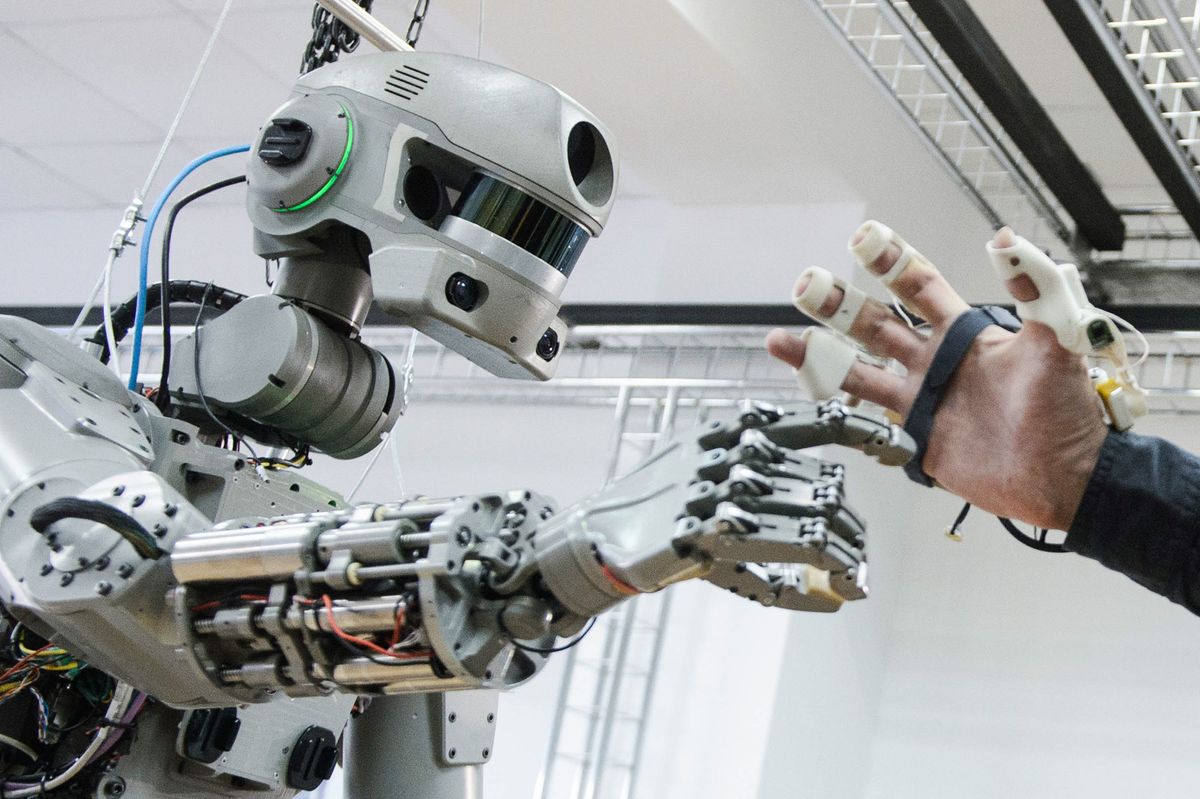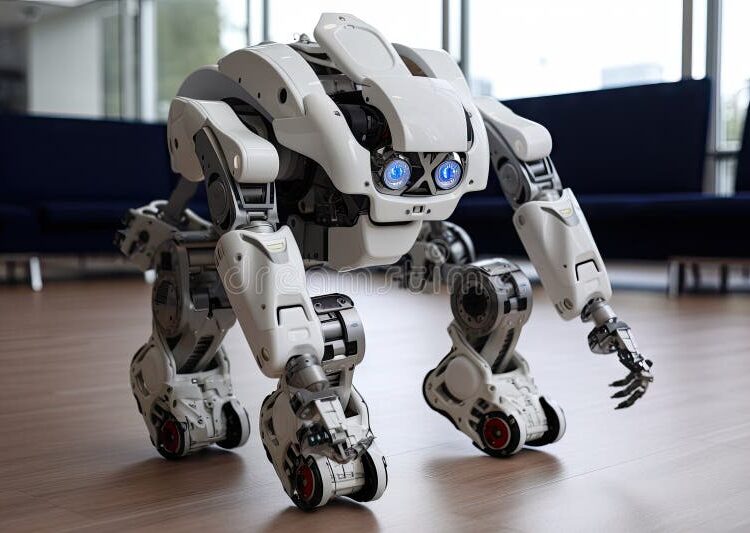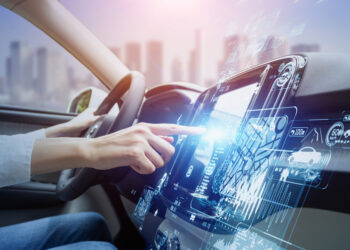Advanced Robotics

Robotics forms the physical manifestation of much of today’s automation, with machines becoming more dexterous, intelligent, and capable of navigating complex, unstructured environments.
A. Collaborative Robots (Cobots): A significant evolution from traditional industrial robots, collaborative robots, or cobots, are designed to work safely and effectively alongside human operators. Equipped with advanced sensors, force-torque limiters, and intuitive programming interfaces, cobots can assist with tasks that are repetitive, ergonomically challenging, or require high precision, without the need for safety cages. They enhance productivity by sharing workspaces with humans, improve worker safety by handling dangerous tasks, and offer remarkable flexibility for small-batch production and quick retooling. This makes advanced automation accessible even to small and medium-sized enterprises (SMEs) and for diverse applications beyond rigid factory lines, such as intricate assembly, quality inspection, and even delicate laboratory work.
B. Mobile Robots (AMRs and AGVs): The movement of goods and materials within factories, warehouses, and increasingly, public spaces, is being revolutionized by mobile automation. Autonomous Mobile Robots (AMRs) navigate dynamic environments intelligently using onboard sensors, maps, and AI, capable of avoiding obstacles and finding optimal routes without fixed tracks or magnetic strips. They contrast with older Automated Guided Vehicles (AGVs), which follow predefined paths. AMRs are transforming logistics by automating material transport, inventory management, and last-mile delivery. They improve efficiency in e-commerce fulfillment centers, streamline hospital operations (delivering supplies), and are even venturing into urban environments for package delivery, offering flexible and scalable solutions for intra-logistics and beyond.
C. Humanoid and Bipedal Robots: The development of humanoid and bipedal robots represents the pinnacle of robotic engineering, aiming to create machines that can operate effectively in environments designed for humans. Robots like Boston Dynamics’ Atlas and Figure AI’s humanoid platforms are pushing boundaries in dynamic balance, complex manipulation, and navigating uneven terrain (stairs, slopes). While still primarily research platforms, their advanced actuators, perception systems (Lidar, cameras, force sensors), and AI-driven locomotion algorithms are paving the way for future service robots capable of performing complex tasks in homes, hospitals, disaster zones, and even hazardous industrial settings too dangerous for human intervention. Their potential applications range from assisting the elderly to performing intricate repairs in inaccessible locations.
D. Surgical Robotics and Medical Automation: In healthcare, highly specialized surgical robots are transforming patient care. Systems like the da Vinci Surgical System enhance a surgeon’s dexterity, precision, and visualization during minimally invasive procedures, leading to smaller incisions, reduced pain, faster recovery times, and fewer complications. Beyond the operating room, automation’s breakthroughs extend to robotic pharmacies for accurate drug dispensing, automated lab systems for high-throughput diagnostics, and robotic rehabilitation aids that help patients regain mobility. These tools not only improve clinical outcomes but also free up human professionals for more complex and empathetic patient interactions.
AI-Driven Automation Software
The physical presence of robots is often powered and guided by sophisticated Artificial Intelligence (AI) software, which provides the cognitive capabilities for true autonomy and intelligent decision-making.
A. Advanced Machine Learning and Deep Learning Platforms: At the heart of intelligent automation are advanced machine learning (ML) and deep learning (DL) platforms. These software frameworks (like TensorFlow, PyTorch, Keras) enable machines to learn from vast datasets, identify complex patterns, and make predictions or decisions with increasing accuracy. In automation, this means robots can learn to grasp new objects, vision systems can detect intricate defects, and autonomous vehicles can interpret complex road conditions. The continuous innovation in these platforms allows for the development of more sophisticated and adaptive automated systems, moving beyond pre-programmed instructions to truly intelligent behavior.
B. Natural Language Processing (NLP) and Conversational AI: The ability for machines to understand, interpret, and generate human language is a game-changer for automation. Natural Language Processing (NLP) breakthroughs enable conversational AI systems (chatbots, voice assistants) to handle complex customer service interactions, automate data entry from unstructured text, and even facilitate human-robot communication through natural speech. In call centers, intelligent virtual agents can resolve routine queries, freeing human agents for more nuanced problems. In smart homes, voice commands enable effortless control of numerous automated devices, making technology more accessible and intuitive for everyone.
C. Computer Vision and Perception Systems: For robots and autonomous systems to interact with the physical world, advanced computer vision and perception capabilities are essential. This includes software that enables machines to “see” and interpret their surroundings through cameras, LiDAR, and radar. AI-powered vision systems can identify objects, track movement, detect anomalies, and build 3D maps of environments. This is crucial for robotic navigation, automated quality inspection (detecting tiny flaws in manufactured goods), facial recognition for security, and real-time scene understanding for autonomous vehicles, allowing machines to perceive and react to their environment with near-human accuracy.
D. Reinforcement Learning (RL) for Autonomous Control: Reinforcement Learning (RL) is a powerful AI paradigm where an agent learns optimal behavior through trial and error, receiving rewards for desired actions and penalties for undesired ones. This approach is revolutionizing the control of complex autonomous systems. RL algorithms can train robots to perform intricate manipulation tasks, optimize energy management in smart buildings, or design efficient strategies for logistics and traffic management. By allowing systems to learn from experience in dynamic environments, RL is driving breakthroughs in autonomous decision-making for everything from self-driving cars to industrial control systems.
Business Process Automation (BPA) and RPA
Automation’s breakthroughs are not just physical; they are digital, transforming how businesses operate at every level, from individual tasks to entire enterprise workflows.
A. Robotic Process Automation (RPA): Robotic Process Automation (RPA) involves software robots (bots) that mimic human actions to automate repetitive, rule-based digital tasks. These bots can interact with existing software applications, fill out forms, extract data, process transactions, and send emails, without requiring changes to underlying IT systems. RPA is transforming back-office operations in finance, HR, customer service, and IT, reducing manual errors, improving efficiency, and freeing human employees from tedious, high-volume tasks, allowing them to focus on more strategic and creative work.
B. Intelligent Automation (IA) and Hyperautomation: Moving beyond simple RPA, Intelligent Automation (IA) combines RPA with advanced AI technologies like machine learning, natural language processing, and computer vision. This allows IA systems to automate more complex, cognitive tasks that require judgment, interpretation, and learning. The concept of Hyperautomation involves orchestrating multiple automation technologies (RPA, AI, process mining, low-code platforms) to automate as many business processes as possible. This end-to-end approach leverages AI to discover, analyze, and automate processes comprehensively, driving massive efficiency gains and digital transformation across entire organizations.
C. Business Process Management (BPM) with AI Integration: While BPM focuses on optimizing end-to-end business processes, the integration of AI within BPM takes it to the next level. AI can analyze process data to identify bottlenecks, predict outcomes, and recommend optimal workflows. It can also automate decision-making within processes, such as approving loan applications or routing customer inquiries. AI-powered BPM systems continuously learn and adapt, making processes more agile, efficient, and resilient, ensuring that business operations are always optimized for performance and customer satisfaction.
D. Low-Code/No-Code Automation Platforms: To democratize automation and enable citizen developers, low-code/no-code automation platforms are emerging as revolutionary tools. These platforms allow users with little to no coding experience to build complex automated workflows and applications using visual interfaces, drag-and-drop functionalities, and pre-built templates. This empowers business users to automate their own tasks and processes, accelerating digital transformation and fostering a culture of innovation across the enterprise, reducing reliance on specialized IT teams for every automation initiative.
Smart Environments and Beyond

Automation’s reach extends far beyond factories and offices, permeating our daily lives through smart environments and advanced infrastructure.
A. Smart Homes and Building Management Systems: Our living and working spaces are becoming increasingly automated through smart home technologies and sophisticated Building Management Systems (BMS). Wireless sensors, smart thermostats, automated lighting, and integrated security systems intelligently manage comfort, energy consumption, and safety. AI-powered BMS can learn occupant preferences, optimize HVAC systems based on real-time occupancy and weather data, and predict maintenance needs, leading to significant energy savings, enhanced comfort, and improved operational efficiency in residential and commercial buildings alike.
B. Smart Cities and Urban Automation: Smart cities leverage pervasive automation to improve urban living. This includes automated traffic management systems that dynamically adjust signals to optimize flow and reduce congestion, smart waste management systems that optimize collection routes, and automated public transportation (e.g., driverless shuttles, automated metro lines). AI-powered surveillance systems enhance public safety, and automated utility grids manage energy distribution. These innovations make cities more livable, sustainable, and efficient, creating a seamless urban experience for residents and visitors.
C. Autonomous Vehicles and Transportation Networks: The development of autonomous vehicles – from self-driving cars to automated trucks, trains, and even drones – represents one of the most visible and impactful breakthroughs in automation. These vehicles use an array of sensors (Lidar, radar, cameras), advanced AI algorithms, and real-time mapping to perceive their environment, make decisions, and navigate without human intervention. This promises to revolutionize personal mobility, logistics, and public transportation, potentially reducing accidents, alleviating congestion, and offering new services like on-demand autonomous ride-sharing.
D. Automated Healthcare Delivery and Personal Assistants: Beyond surgical robots, automation is transforming various aspects of healthcare. Automated dispensing systems ensure medication accuracy. AI-powered diagnostic tools analyze medical images and patient data to assist clinicians. Automated patient monitoring systems track vital signs and alert staff to changes. Furthermore, automated personal assistants, often embedded in smart devices or robots, can assist individuals with daily tasks, provide companionship, and offer reminders for medication or appointments, enhancing independence for the elderly or those with disabilities.
Challenges and Ethical Frameworks
While automation’s breakthroughs promise immense progress, their widespread adoption also presents significant challenges and profound ethical considerations that demand careful and proactive engagement.
A. Workforce Transformation and Ethical Job Displacement: The most pressing concern is the impact of automation on employment. While automation creates new jobs (e.g., robot maintenance, AI trainers), it will undoubtedly displace workers in routine or repetitive roles. Addressing this requires robust workforce reskilling and lifelong learning initiatives, strong social safety nets, and policies that encourage human-robot collaboration rather than pure replacement. The ethical imperative is to manage this transition justly and ensure inclusive economic growth.
B. Cybersecurity and System Vulnerabilities: As more critical infrastructure and personal systems become automated, the risks of cybersecurity breaches and system vulnerabilities escalate. A single point of failure or a successful cyberattack on an automated system could have cascading and catastrophic consequences. Developing highly resilient, secure-by-design automated systems and robust cybersecurity protocols, along with continuous monitoring and rapid response capabilities, is paramount to protect against malicious actors.
C. Ethical AI and Algorithmic Bias: The intelligence driving modern automation relies heavily on AI. If the data used to train these AI systems is biased, or if the algorithms themselves contain inherent biases, automated decisions can perpetuate and even amplify societal inequalities. Ensuring ethical AI development, transparency in algorithmic decision-making (explainable AI), and implementing rigorous testing for bias are crucial for building trust and ensuring that automation serves all segments of society fairly.
D. Accountability, Liability, and Regulation: As autonomous systems make more independent decisions, questions of accountability and liability become complex. Who is responsible when an autonomous vehicle causes an accident, or an AI system makes a faulty medical diagnosis? Establishing clear legal and regulatory frameworks for autonomous systems, including standards for safety, performance, and ethical behavior, is essential for their responsible deployment and public acceptance.
E. Human-Automation Teaming and Trust: The future of work and daily life will increasingly involve human-automation teaming. Building trust between humans and autonomous systems is critical. This requires intuitive interfaces, transparent operation, reliable performance, and the ability for humans to understand, override, or take control when necessary. Over-reliance on automation without maintaining human skills or vigilance can also lead to new forms of risks.
Conclusion
Automation’s latest breakthroughs are not just incremental improvements; they are revolutionary forces reshaping industries and fundamentally altering the very fabric of our society. From dexterous cobots in factories to intelligent software automating complex business processes and autonomous vehicles transforming our urban landscapes, these advancements promise unprecedented levels of efficiency, precision, and human augmentation. While the journey involves navigating complex ethical, economic, and societal challenges, embracing these transformative technologies with foresight, responsibility, and a commitment to inclusive development will be key to harnessing their immense power for a more prosperous, sustainable, and intelligent future for all humanity. The era of widespread intelligent automation has truly arrived, and its impact will continue to unfold for decades to come.








